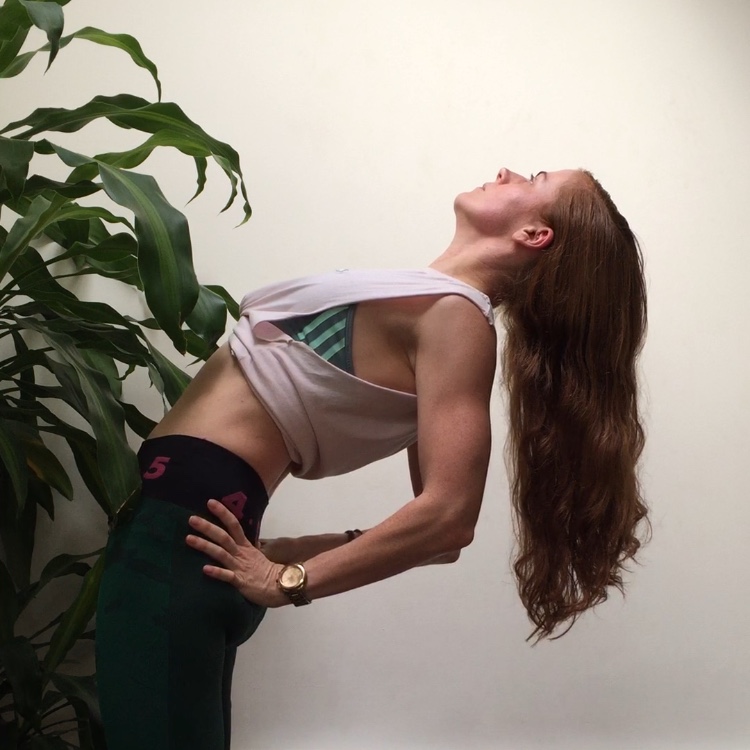5 simple, stress-busting yoga poses
Olivia Marley
~ This blog post originally appeared in an edited form on Selfridges.com ~
It can sometimes feel almost impossible for stressed out city dwellers to lie down and instantly relax. So if you’re reading this because you’re feeling stressed you probably need to burn off some nervous energy before you even try chilling out! If that sounds like you, my first recommendation for you is:
Warrior 2
Stand with your feet wide apart. Turn your right toes out so now your feet are at 90 degrees to each other. Reach your arms out wide at shoulder height and bend your right knee until it’s stacked over your right ankle. Look past your right fingertips. Hold here as you inhale and exhale slowly five times, then repeat on your left side.
Tip: Keep an eye on your front knee (the one that’s bending). Don’t lend it bend past the level of your ankle, and don’t let it turn in. Stop if anything hurts!
Locust pose
It’s really common when you’re under pressure to feel like your shoulders are hunching up round your ears. That can also mean your head drops forwards and down, which will make your neck and upper back unnecessarily tense. Locust pose will strengthen the muscles that help undo those postural habits! Lie down on your front, with your arms by your side and palms facing down. As you inhale, lift your chest, arms and legs away from the floor so you’re just resting on your belly. Lower down as you exhale. Repeat five times.
Tip: You want to feel the muscles in your back working - try drawing your shoulderblades towards each other and then down your back away from your ears.
Child’s pose
We’ve worked your legs and your back muscles in the last two postures, so now let’s start to slow it down a bit. Come to hands and knees with the tops of your feet flat on the floor. Sit your bum back on to/ towards your heels and let your torso rest on your thighs. Hold here while you inhale and exhale slowly 10 times.
Tip: If this is uncomfortable on your knees or the tops of your feet you can always rest them on a rolled up blanket to give yourself a bit more cushioning.
Legs up the wall
Lie on the floor with your bum near the skirting board and your legs up the wall. If this is too much of a stretch on the backs of your legs either bend your knees a little or shuffle your bum a bit further away from the wall. Hold here while you inhale and exhale slowly at 10 times (or stay for as long as you like).
Tip: If you find your feet start to tingle try bending your knees and walking your feet down the wall, so you end up resting with your knees bend and drawn into your chest.
Corpse pose
You’ve earned it: time to make like a corpse and lie still! Lie flat on your back with your arms a little way out from the sides of your body. Experiment with whether you prefer your palms facing up or down, and let your feet fall out to the side. You may also want a blanket over you or under your head as a pillow. Take a couple of slow deep breaths, and then just lie still. Stay for at least three minutes, or as long as you can.
Tip: You might want to set a timer on your phone for however long you want to stay in this pose, so you don’t lie there wondering how much time has passed. Make sure you put your phone on silent though so you don’t get disturbed!



